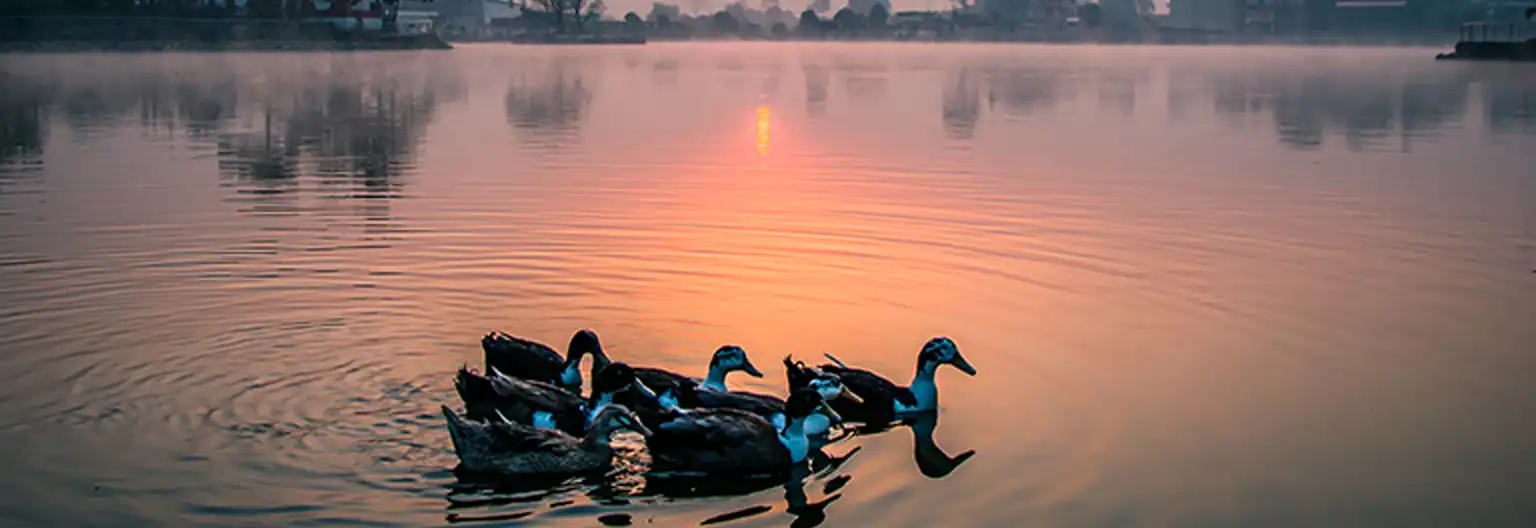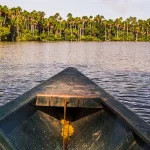Loktak Lake: A Complete Travel Guide to India’s Only Floating Lake
Nestled in the heart of Manipur, Northeast India, Loktak Lake is a natural wonder that captivates every visitor. Known as the largest freshwater lake in the region, Loktak Lake stands out for its unique floating islands and serene beauty. Whether you’re a nature lover, a wildlife enthusiast, or a traveler seeking offbeat destinations, Loktak Lake promises an unforgettable experience. In 2025, this gem remains more radiant than ever, combining adventure, culture, and peace. Let’s delve into this travel guide to learn about Loktak Lake and why it’s worth visiting!
What is Loktak Lake and Why is it Famous?
Loktak Lake in Manipur, close to Moirang, is India’s only floating lake and Northeast India’s largest freshwater lake. Stretching to an area of about 287 square kilometers, Loktak Lake is famous for its glassy surface and spellbinding phumdis—vegetation, soil, and organic matter floating islands. The phumdis give Loktak Lake the name “Floating Lake” and turn it into a special wonder.
What makes Loktak Lake special is its cultural and natural significance. It is home to the Keibul Lamjao National Park, the only floating national park in the world, and a home to the critically endangered Sangai deer. Since 1990, a Ramsar Wetland of International Importance, Loktak Lake is the livelihood of the people, providing them with fish, water, and hydropower. Its uniqueness is in this peculiar blend of nature and man-made balance, which draws tourists to its shores in 2025.
What Makes Loktak Lake Unique? – The Floating Phumdis
The star attraction of Loktak Lake is its phumdis—mobile islands that drift on the lake. They are natural structures composed of a mixture of dead vegetation, soil, and organic matter that rot, forming a solid mat on the surface of the lake. They are huge, some measuring up to 40 square kilometers, and there are villages, huts, and even the Keibul Lamjao National Park existing on them.
Picture walking on land that floats on water! The phumdis change with the seasons and the wind, so Loktak Lake is a living, breathing creature. Phumsangs (floating houses) are constructed by fishermen on the islands, where they lead an unusual existence on the lake. This cannot be seen anywhere else, so Loktak Lake is a destination on everyone’s bucket list for those who want something out of the ordinary.
Keibul Lamjao National Park – The Floating Wildlife Sanctuary
It has the Keibul Lamjao National Park, a 40-square-kilometer abode on top of the largest phumdi. It’s the globe’s only floating national park and a paradise for animals, and one simply must see it. The park is the sole natural home of the critically endangered Sangai deer, or the “dancing deer” because of its graceful jumps from one phumdi to another.
Aside from the Sangai, Keibul Lamjao is also home to hog deer, otters, and over 100 birds such as winter migratory water fowl that line its banks in numbers. Indian entry is ₹50, and foreign entry ₹300; a boat tour (₹200-500) gives one a close experience of this strange ecosystem. Coming at 6-10 AM or 3:30-6 PM maximizes your opportunity of getting a glimpse of the Sangai. In 2025, this sanctuary continues under protective cover and is a must-visit during any trip to Loktak Lake.
Top Things to Do at Loktak Lake
Loktak Lake offers a mix of adventure and convenience. These are the best things to do:
1.Boat Rides: Take a trip on Loktak Lake in a typical canoe (₹100-300) to view phumdis up close and see fishermen busy at work. Morning rides at sunrise or evening rides at sunset are mesmerizing.
2.Visit Keibul Lamjao National Park: Take a boat tour or guided walk (if the phumdis are stationary) through the floating park to see Sangai deer and birds.
3.Fishing with Locals: Join fishermen on phumdis to see genuine fishing—a functional way of reaching Manipuri culture.
4.Sunset over Sendra Island: Drive or walk to Sendra to see the serenity of Loktak Lake as sunset claims the sky. Sendra Tourist Home (₹1,000/night) also has a cafeteria.
5 Loktak Tastes: Enjoy fish curry and bamboo shoots at Manipuri restaurants in Moirang (₹50-150/meal).
All these things make Loktak Lake a paradise for nature enthusiasts and culture enthusiasts alike.\
How to Reach Loktak Lake, Manipur
It is convenient to reach Loktak Lake from Manipur’s capital, Imphal, 48 km away. Here’s how:
- By Air: Fly to Tulihal Airport, Imphal (flights from Delhi, Kolkata, ₹3,000-6,000). Then, taxi (₹1,500-2,000) or shared van (₹50-100) to Moirang, the gateway to Loktak Lake.
- By Train: Dimapur (215 km) or Jiribam (225 km) is the closest railway station. Then, buses or taxis (₹800-1,500) go to Imphal, and then a road trip to Moirang.
- By Road: NH37 connects Imphal to Loktak Lake through Moirang. Buses (₹50) or taxis (₹1,000) from Imphal’s Ima Keithel marketplace within 1-2 hours.
Village cars (₹20-50) or boats (₹100) drop you close to Loktak Lake’s bank from Moirang. Go there in 2025 for better roads and increased connectivity!
Local Culture and Life Around Loktak Lake
Loktak Lake is not merely a natural wonder—it’s the heart of Manipuri existence. Here, Manipur’s majority ethnicity, the Meitei, reside, making do on phumdis and lake margins. Fishermen traverse the lake by wooden boat, using age-old nets and technique passed from generation to generation from father to son. Their phumsangs—waterborne floats—spattered around the lake, constitute an existence attuned to nature.
The area is filled with festivities like Lai Haraoba (May-June), which commemorates Meitei culture through song and dance. Women also take centre stage, running the iconic Ima Keithel market at Imphal, within driving distance. Manipuri dance, one of India’s classical dances, and depicting the beauty of the Sangai is also affected by Loktak Lake. Homestay (₹800-1,500/night) at Thanga or Moirang lets you view life local style—fish stews and warm hugs are remembered.
Why You Should Visit Loktak Lake – A Hidden Gem of Northeast India
Loktak Lake is a treasure that awaits discovery. Its floating phumdis and Keibul Lamjao National Park are a glimpse into nature’s imagination. Eco-tourism is flourishing here in 2025, with conservation-friendly homestays and guided tours (₹500-1,000) contributing to the cause. The lake’s biodiversity—230 plant species, 100+ birds, and aquatic life—make it a wildlife lover’s paradise.
Apart from nature, the cultural diversity and tranquility of Loklak Lake are unparalleled. And it won’t break the bank—a 2-3 day excursion costs ₹3,000-6,000, including accommodations, meals, and travels. November to February is the ideal time to visit, when it is cold (15-25°C) and birdwatching galore. Northeast India’s best-kept secret is Loklak Lake—it’s not just a place to go but also a witness of strength, elegance, and peace.



